Last updated: May 7, 2018
Article
Elephant Seal Monitoring FAQ
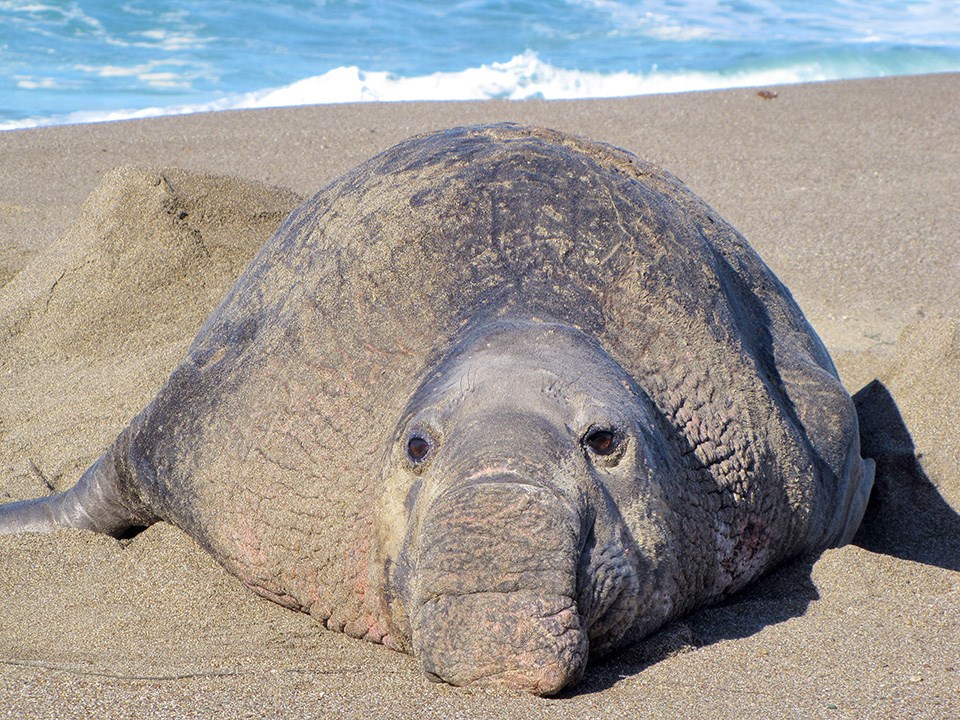
NPS / Sarah Allen
Have you ever wondered how scientist learn about animals as unusual as elephant seals? By monitoring elephant seals at Point Reyes, researchers and scientists determine trends in seal populations, migration, and reproductive success. This data is used as a baseline to determine trends, quantify annual reproductive success, and learn about their biology.
When Does the Monitoring Happen?
Elephant seals arrive at Point Reyes in December through March during the breeding season, and again during May through July, as seals return to Point Reyes to molt (shed and regrow their entire fur coat). Monitoring occurs throughout the breeding and molting seasons.
Where Does the Monitoring Happen?
The monitoring occurs in all the elephant seal colonies found on the Point Reyes Headlands, including the colony at Chimney Rock.
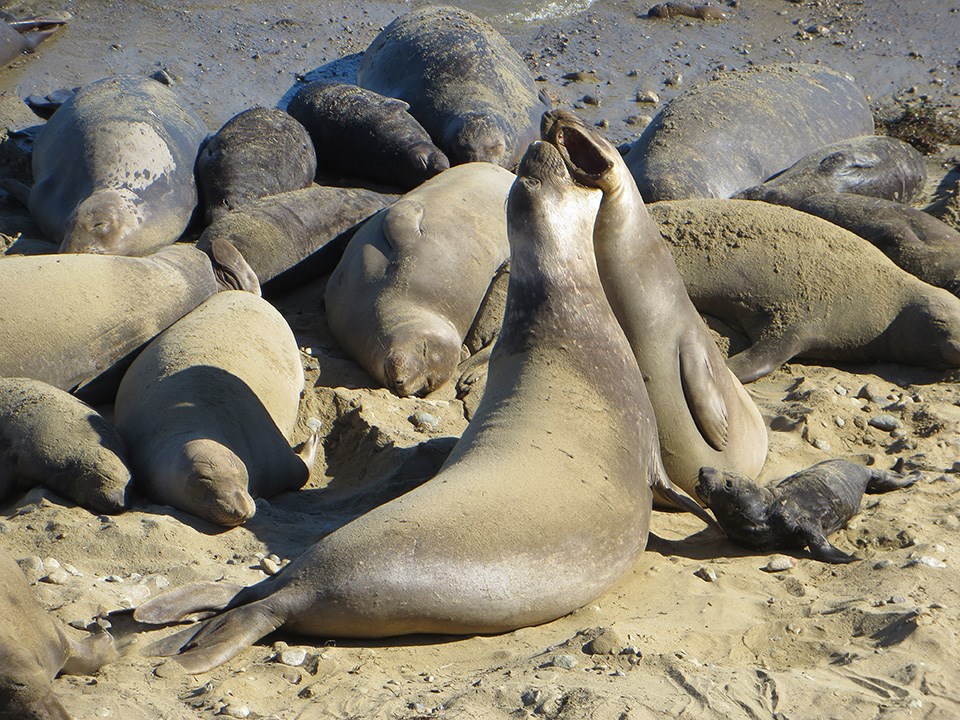
NPS
What Are the Methods?
Researchers visit elephant seal colonies regularly during the pupping and mating season. They count seal numbers, births, and deaths, and document unusual behavior. Listed below are other methods that researchers use to determine biology and to track individual animals.
Flipper Tags
These tags are made of colored plastic. Researchers use the color of tags to determine the geographic location where the animal was tagged. Point Reyes animals, for example, always get a pink tag. Marine mammal rehabilitation hospitals, like The Marine Mammal Center, tag their rehabilitated patients that are released back to the wild with orange tags only. Sea lions are tagged on their front flippers. Seals are tagged in the webbing between digits on their hind flippers.
Brands
Researchers will tag and permanently brand numbers on the animal’s back or side in an effort to track the animal during its entire life. Tags are not as reliable as a brand, as they may fall or rub off and are generally harder to see. The continued observation of branded individuals can provide a wealth of information about range, behavior, and life history of not only that individual but the entire species. The numbers are put on with either a hot brand or a cold brand. A hot brand is done with a heated metal number. The cold brand is a copper number chilled with liquid nitrogen. With both procedures the animal must be held still—not an easy task. The hot brand takes seconds to leave a mark, while the cold brand may take a minute or more. Hot brands are easier to apply, but they kill the fur follicles and cause deep damage if done carelessly. Cold brands are not as damaging. The fur grows back white in color, so the number is visible.
Dye Marks
Numbers, names, or identifying marks are sometimes dyed into the fur of seals and sea lions. Regular hair dye, donated by a company or by Lady Clairol TM, is used. Dye marks are only temporary as they disappear when the animal molts.
Time Depth Recorders, Radio Tags and Satellite Tags
Time depth recorders (TDRs) are miniaturized sensor devices used to study diving behavior. They are set in a white plasterlike base and glued with epoxy (resin-based adhesive) to the seal’s back. These are convenient to use with elephant seals that return to the same location on land when they molt, so the TDR can be easily retrieved. The information gathered by a TDR is transferred to a computer for analysis. TDRs are activated by sensing light and dark, and collect data that enable scientists to see how often the animal dives, and the depth and duration of the dive. Researchers have also used TDRs with harbor seals. Radio tags and satellite tags have a small transmitter and battery encased in epoxy with an antenna that can be internal or protrude. The tags may be attached to a flipper or glued to the head or back with super glue. Each radio tag has a specific radio frequency, and this signal is detected using a handheld receiver.
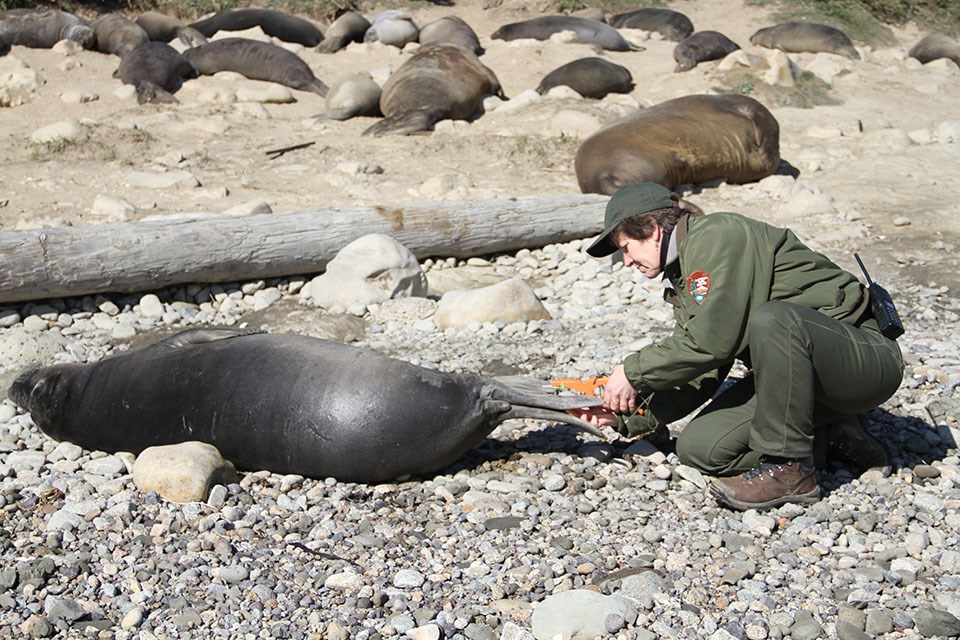
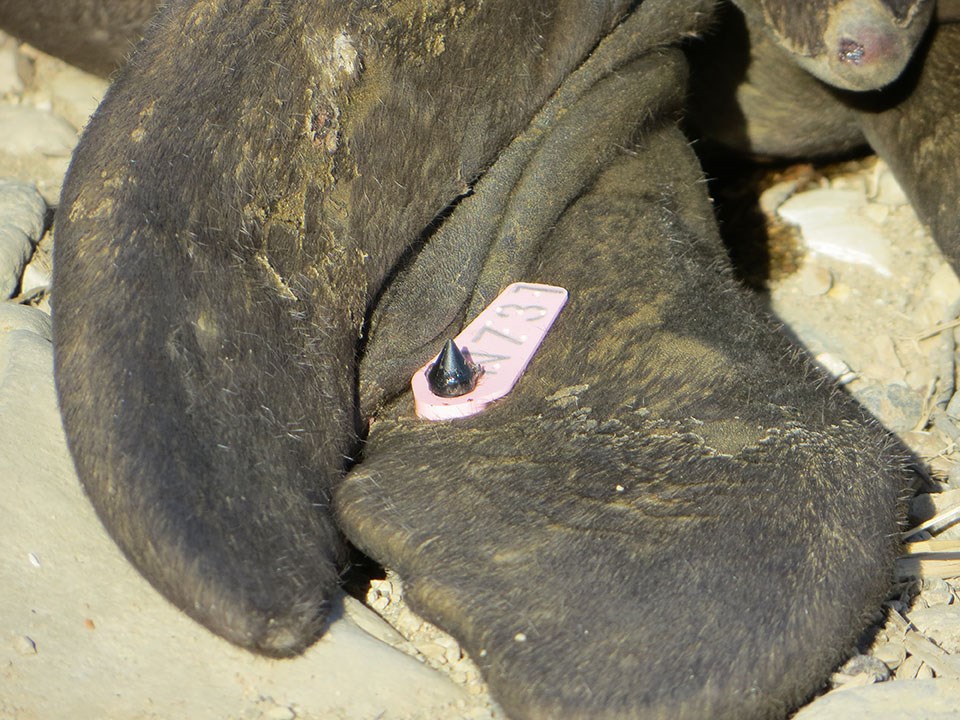
Top photo: NPS / Joseph Schramm. Bottom photo: NPS / Jane Khudyakov
Seal Viewing Tips
- For your own safety, always observe elephant seals from a distance. Use binoculars and spotting scopes. If a seal becomes alert or nervous and begins to move away, you are too close.
- Stay at least 100 feet from any marine mammal.
- Do not come between a cow and pup, a bull and a group of cows, or two bulls challenging each other.
- Watch quietly; whisper. Move slowly.
- Bring your pets only where they are allowed.
- Observe beach closures and restrictions.
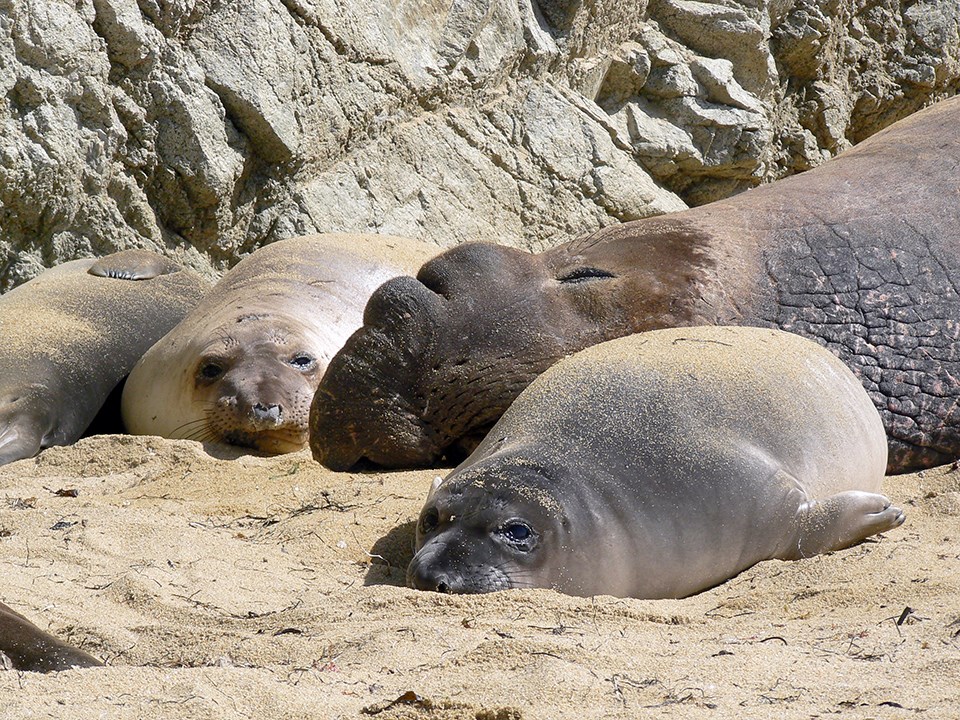
NPS / Heather Jensen
Special Thanks
Point Reyes National Seashore Association
Gulf of the Farallones National Marine Sanctuary
Año Nuevo State Reserve
Marine Mammal Center
Canon, USA, Inc. “Expeditions in the Park”
National Park Foundation
Additional Resources
Contact Information
Links
Point Reyes Viewing Guidelines
San Francisco Bay Area Inventory & Monitoring Network
Pacific Coast Science & Learning Center
Elephant Seal Monitoring at Point Reyes National Seashore
Point Reyes National Seashore
